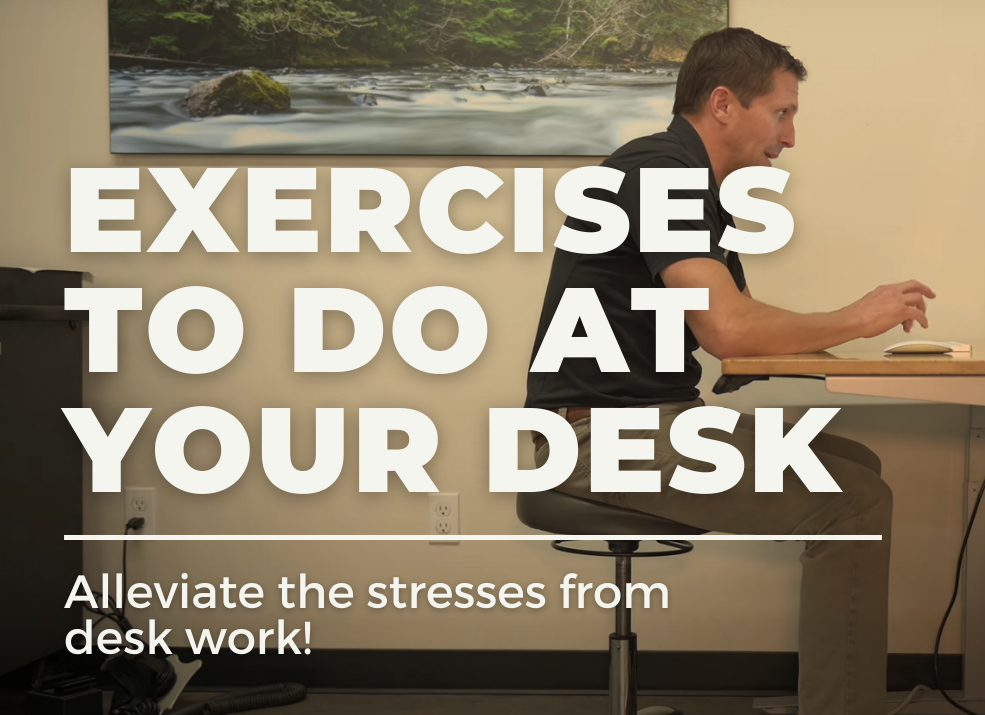Watch the video or read below for a recap
Getting injured at your desk does not make for a good story. Unfortunately, repetitive stress injuries happen over time and you don’t often see them coming. Give these desk exercises a try; you won’t look silly if your co-workers do them with you.
Let’s start with the common pitfalls of common desk postures and the repetitive stressors involved:
- Forward (or anterior) head positions with the chin jutted forward
- Shoulders that are rolled forward
- Elevated shoulders
- Slouched position of the lower back and loss of curvature in the lower back
- Hip flexor muscles in a shortened position for sustained periods
The first 3 points can lead to excessive stress on the upper back, neck, and shoulders. Instead of having the weight of your head spread evenly on top of your spinal column, more of the weight shifts forwards creating increased stress and strain on the muscles of your upper back and the back of your neck. This position leads to a jutted chin position to try to keep your eyes on your screen and can cause overextension and tension in the upper neck.
In this position, the really small suboccipital muscles at the base of the skull are being used to keep your eyes on the screen instead of our larger and stronger muscles of the neck. Often people report tension-type headaches and neck aching and fatigue when in these positions.

Are you having neck or back pain? Click Here to Schedule
Schedule your first evaluation and treatment with Chiropractors Dr. Ben and Dr. Kyle at Function Performance Sport Chiropractic in Oregon City.
Slouching of the lower back and shortened hip flexors can lead you down the path of irritating the lower back from excessive compressive loads on your lumbar discs (the spacers between the bones in our back that allow us to bend and move). Our discs can withstand a lot of load and stress when they are in mechanically sound positions and supported properly by the spinal musculature.
Unfortunately, when we sit we often follow the path of least effort which turns into a slump rounding our low back and letting gravity push us down. This rounded position can put your lower back in a position where it cannot tolerate the sustained loads from sitting for long periods. Keeping our core and spine in good neutral positioning can spread the mechanical loads across a broader area resulting in lower loads in the commonly irritated areas of the lower back.
The video above goes into detail about what you can do to help alleviate these stressors. Give it a watch, and if it’s helpful make sure to share it with a coworker!



